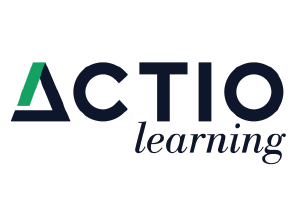No doubt you tune in occasionally to the sprawling, inescapable, often heated 2024 AI debate — where it sometimes seems, as they say on that improv comedy program, the rules are made up and the points don’t matter. Too many lofty, utopian promises or bleak scenarios? I feel the same. In the modern learning platform sector, we’re all eying the red line that divides hype and bombast from real change that delivers tangible value.
But in workplace development, at least, I see a crystal clear AI value play underway — an overlooked revolution already in progress.
More Effective Upskilling? Faster? At Scale? Yes, Yes, Yes.
Human resources and training pros know more companies struggle with skills gaps – mounting needs that neither current workers nor new applicants are equipped to address. They also know old-school training protocols, centered on slides, videos and manuals, are less and less effective on a diverse, distributed workforce. (A surprising percentage of workers, particularly younger ones, self-identify as neurodivergent, our research found; they have much to contribute, but struggle with communication skills.) And they’re painfully aware of the high cost of going outside the organization to recruit and retain new talent.
With targeted upskilling, the stopper has always been scale. How can a vast enterprise like a bank or airline, with thousands of people deployed all over plus perpetually evolving rules and regulations, provide specialized competency training so each employee is dialed into current, individually pertinent requirements, let alone advance everyone’s skill sets for upward mobility, job satisfaction and higher productivity? It’s just too many PowerPoints.
The solution to all of the above is personalized learning systems, which respond to individual preferences as well as an organization’s shifting needs on the skill set front. And today, a modern learning platform (MLP) enhanced by AI can change the game, even — or especially — at scale.
MLPs are inherently interactive, wrapping themselves around each user’s learning preference. AI makes creation of bespoke curriculum easier and quicker. ChatGPT and other large language models (LLMs) generate near-instant responses to an individual learner’s prompts. It can cross-suggest additional pertinent material for review. An employee who is stuck on a point can repeat content as often as they like without slowing down the whole class — because they are the whole class.
The days of old-school systems playing back reams of uniform, analogue content for an audience that may or may not be dozing off are, if not entirely over, certainly numbered.
When all this rolls across the length and breadth of a far-flung professional landscape, it doesn’t mean more pressure on trainers and in-house instructional designers. Quite the contrary: AI eases their workflow by taking over repetitive, tedious tasks. (Course design that until recently took days or weeks can now be ready to deploy in minutes.) Compliance officers can use AI-powered data analytics to see how individuals are doing — and perhaps intervene to mentor those who need it. Businesses can identify star performers, too, and respond by supercharging their content lineup.
Human instructors should remain in oversight positions; those who suggest AI can readily replace people altogether, in workplace training or any other sphere, are on the wrong side of the hype-and-bombast line. I keep an “80-20” ratio top of mind: Assign AI to the 80% of instructional duties that are rote and onerous. Real live people add the essential remaining 20%: strategy, editing, assessment and mentoring. Trainers who put AI to work this way find themselves elevated, with more time for higher-value activities.
The Secret Word Is Innovation
It’s easy to see: Evolving away from one-size-fits-all training can drive better business outcomes, turning workplace training from a cost sink to a value vault.
An organization that forecasts a need for some new, emerging competency can try cultivating the rank and file before turning to expensive headhunting. An AI-enhanced platform can create competency maps of the workforce, identify employees most likely to succeed, and serve up targeted, relevant content. “Dream teams,” all-star line-ups of innovators convened to crack some big challenge, can make all the difference to a company. AI-powered platforms might well identify candidates within your own walls. The result is a stronger business with a more satisfied workforce.
Personalized, more engaging workplace learning can pay off in other ways. More effective instruction optimizes the value of workers who, with prior approaches, may have felt left behind. (My company’s own research, note found more than 1 in 5 neurodivergent workers feel their workplace training doesn’t meet their needs. This hinders their professional growth, of course, but it’s a value-blocker for their employers, too.) Companies that commit to developing all forms and flavors of talent typically see productivity gains and boosts in their capability to innovate.
And if more flexible innovation muscles don’t sound attractive, there’s the prospect of simply paying fewer penalties. More recent research of ours indicates U.S. and U.K. companies pay dearly for regulatory and compliance breaches — in the U.K., the average business surveyed lost £1.7 million per year this way — and the most-cited culprit is underinformed employees plus lackluster training. More engaging, personalized learning programs (working at scale) can literally put some of that cash back in an organization’s pocket.
The Right Side of the Hype Line
With AI, I am cautious about overpromising — a little healthy skepticism is prudent. I pay sci-fi horror scenarios no mind, of course (though AI can of course be misused), and I don’t think it’s the road to utopia, either. But for workplace training instructors, large-scale environments, and the promise of personalized learning are already proving real. We’re already seeing the results: AI in this role is advancing more effective workplace instruction, innovation and business success. Believe it.







